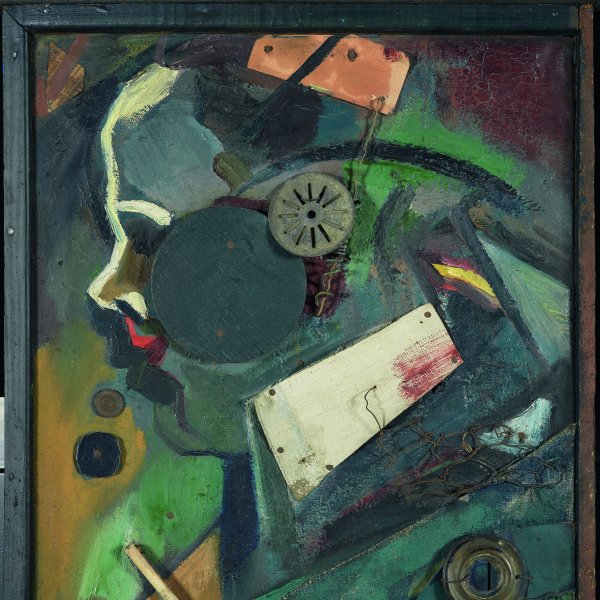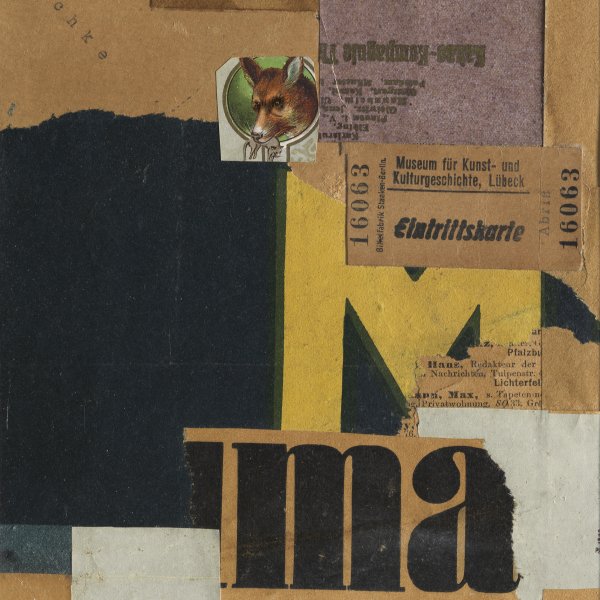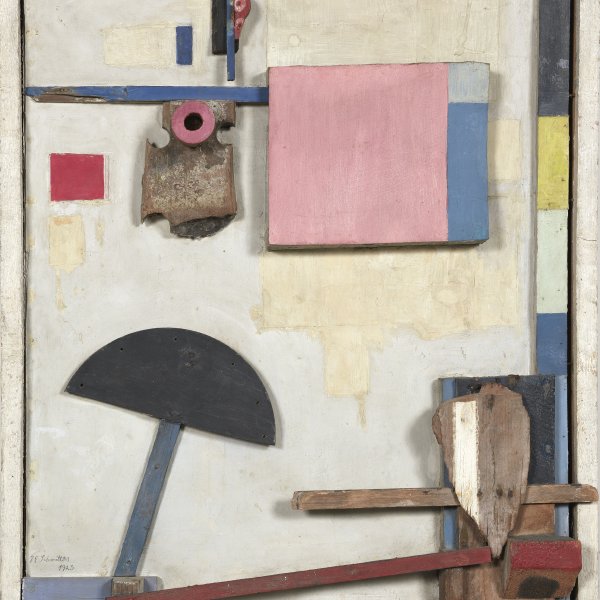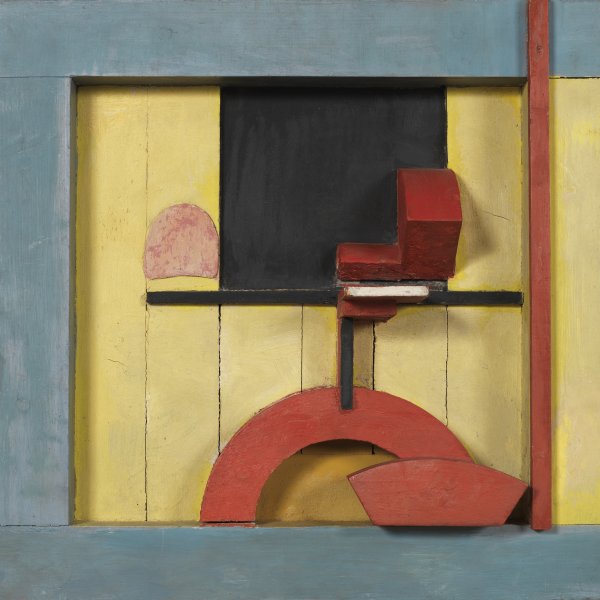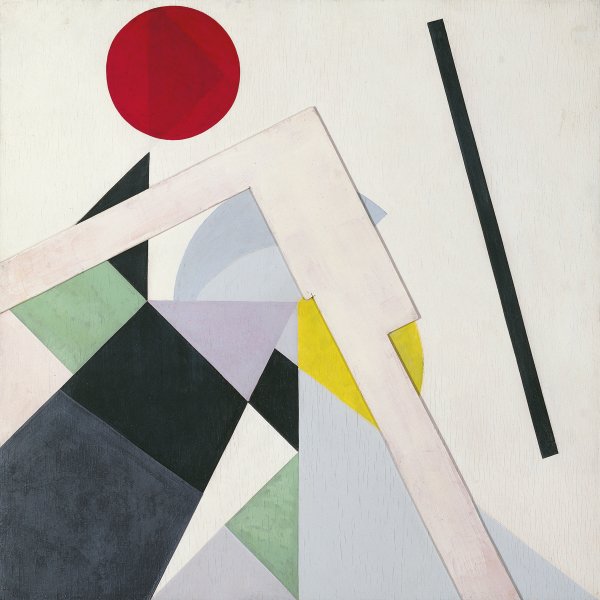Kurt Schwitters
Hanover, 1887-Ambleside, 1948
The German artist Kurt Schwitters was one of the leaders of the Dada movement. He gave up studying architecture in his hometown to move to Dresden, where he visited the Kunstakademie with the aim of becoming a painter. After initially embracing Impressionism followed later by Expressionism, in 1918 he exhibited his first Cubo-Futurism works at Der Sturm gallery in Berlin. The following year he used waste materials to build his first collages and assemblages which he would call Merz, a name derived from a fragment of the word “kommerz” that he had used in one of his collages. Merz became synonymous with the new multidisciplinary art he went on to produce, unfettered by traditional artistic conventions, and gave its name to his poems, his magazine, his theatre and his sculptural-architectural constructions (Merzbau). He himself defined this artistic process as a consequence of the historic moment in which it had befallen him to live:
“The Great War is over, in a certain manner the world is in ruins, and so I pick up its pieces, I build a new reality.” Schwitters maintained close ties with the Dadaists of Zurich and Berlin and in 1922, through Theo van Doesburg, he met the members of De Stijl. The imprint of the geometric art of the Dutch painters and the powerful impact of the exhibition of contemporary Russian art he had seen at the Van Diemen gallery in Berlin the previous autumn spurred him to embrace Constructivist ideas. In 1927 he established the group Die Abstrakten Hannover together with Friedrich Vordemberge-Gildewart. He took part in the activities of the Cercle et Carré group in 1930 and joined Abstration- Création two years later.
Under pressure from the Nazis, in 1937 Schwitters was forced to abandon Germany and settle in Norway, only to leave the country following the German invasion in 1940. From then onwards he lived in Ambleside, England. During these years he combined his Merz works with a return to figuration in landscapes and portraits, which helped him scrape a living in these countries where he was a complete stranger.
“The Great War is over, in a certain manner the world is in ruins, and so I pick up its pieces, I build a new reality.” Schwitters maintained close ties with the Dadaists of Zurich and Berlin and in 1922, through Theo van Doesburg, he met the members of De Stijl. The imprint of the geometric art of the Dutch painters and the powerful impact of the exhibition of contemporary Russian art he had seen at the Van Diemen gallery in Berlin the previous autumn spurred him to embrace Constructivist ideas. In 1927 he established the group Die Abstrakten Hannover together with Friedrich Vordemberge-Gildewart. He took part in the activities of the Cercle et Carré group in 1930 and joined Abstration- Création two years later.
Under pressure from the Nazis, in 1937 Schwitters was forced to abandon Germany and settle in Norway, only to leave the country following the German invasion in 1940. From then onwards he lived in Ambleside, England. During these years he combined his Merz works with a return to figuration in landscapes and portraits, which helped him scrape a living in these countries where he was a complete stranger.

